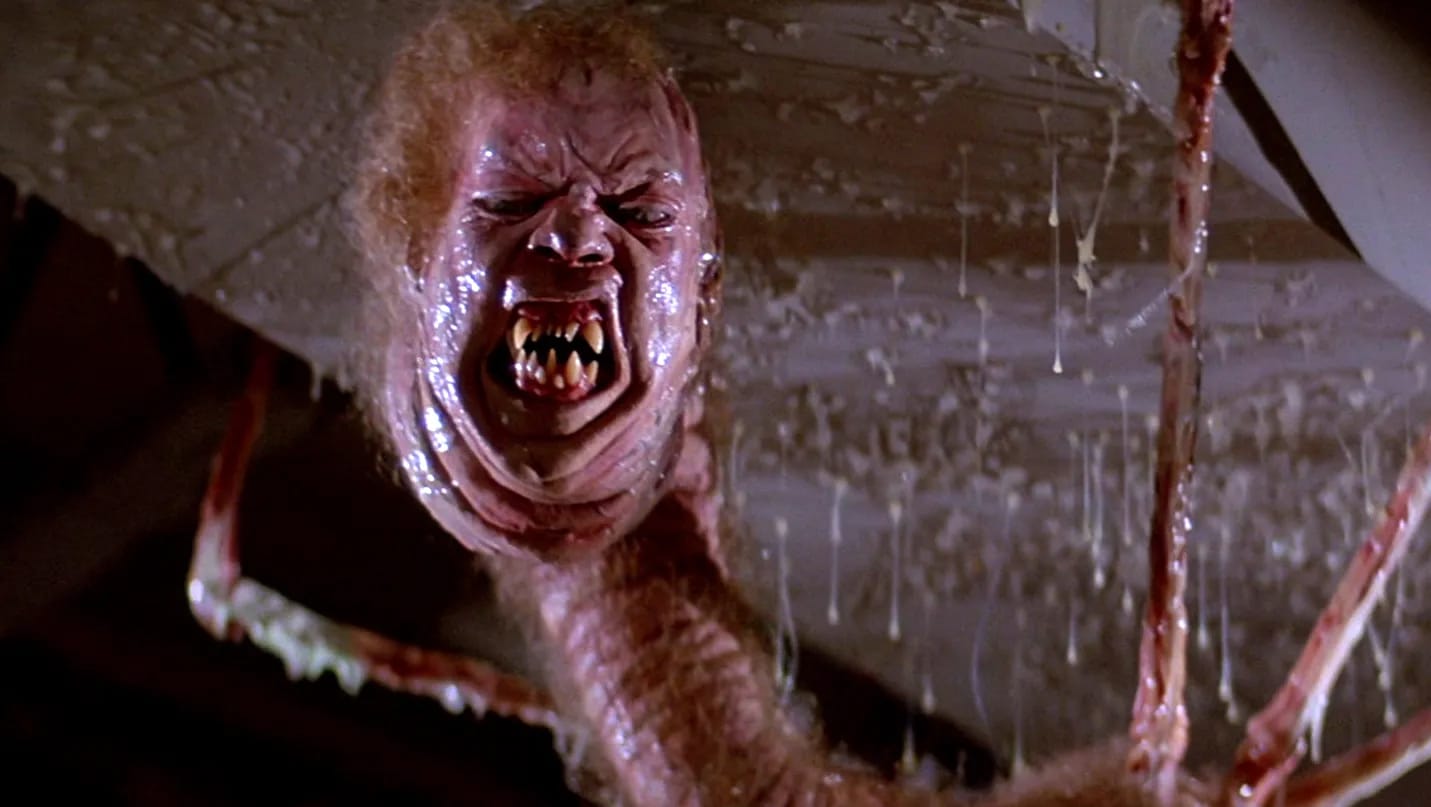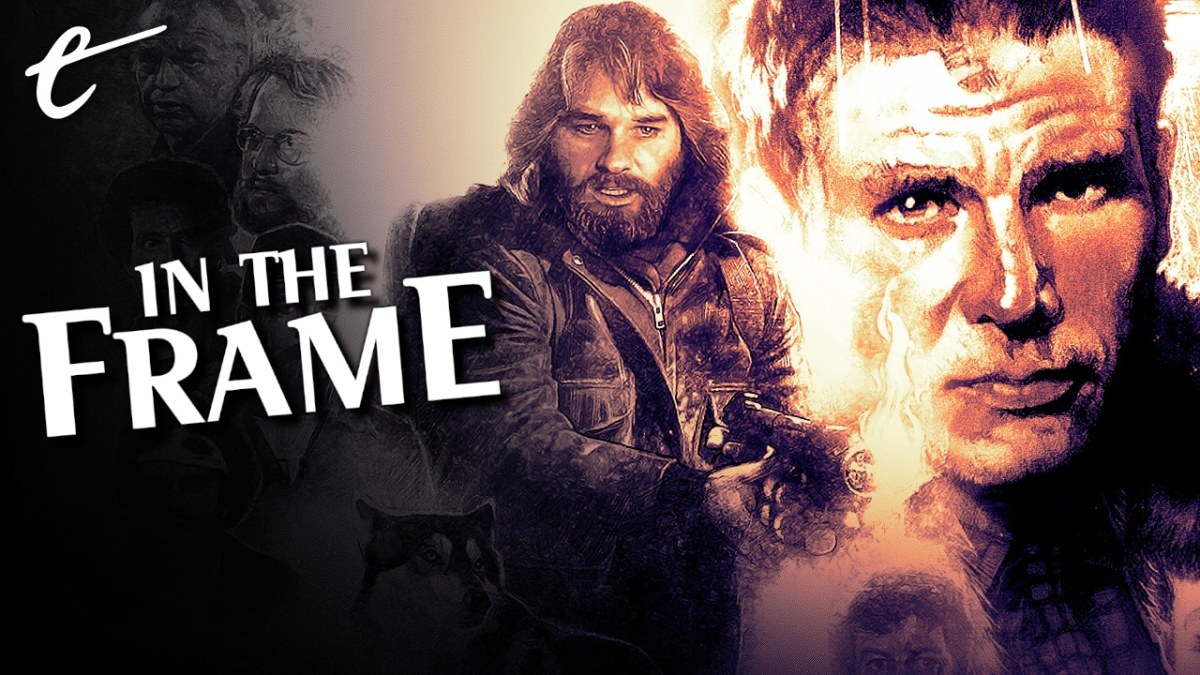This coming weekend is a very special anniversary for film fans. It marks the 40th anniversary of both Blade Runner and The Thing. On June 25, 1982, two classics of American science fiction were released into American cinemas. Of course, nobody knew that at the time. Both movies landed with a resounding thud.
The reviews were mixed at best and brutal at worst. In The New York Times, Vincent Canby called The Thing “a foolish, depressing, overproduced movie,” and Janet Maslin described Blade Runner as “a film that has neither strong characters nor a strong story.” At Time, Richard Corliss summarized Blade Runner as “a beautiful, deadly organism that devours life.” Roger Ebert dismissed The Thing as “just a geek show, a gross-out movie in which teenagers can dare one another to watch the screen.”
Audiences were no kinder. Neither film could topple E.T. the Extra-Terrestrial from the top of the box office in its third weekend. The Thing was counted among the “obvious” losers of the year at the box office, and the reception panicked Universal enough that director John Carpenter was yanked off its planned Firestarter adaptation. More than a decade after its release, Blade Runner still hung around director Ridley Scott’s neck as “a box office disappointment, disdained by audiences.”
However, the reputation of these films slowly grew in the decade that followed. Home media was a major part of this, allowing Blade Runner and The Thing to find their way into the hands of eager young audiences who didn’t catch it in the cinema. These became cult movies in the purest sense of the world, markers of a certain sense of taste among a younger generation of audiences, until they were completely reclaimed and rehabilitated.

While it’s tempting to argue that Blade Runner was rehabilitated by the release of the varied alternate cuts of the movie, the opposite is true. Those alternate cuts only happened because the film had won over enough of an audience to convince the studio that it merited another look. By 1990, Blade Runner had amassed enough fans that there were lines up around the block for special screenings of an unearthed early cut of the film in both Los Angeles and San Francisco.
Following these screenings, fans wrote letters to the press to appeal for a popular reconsideration of the film and to beg Warner Bros. to “come clean and release a director’s cut.” By 1992, the film had accrued enough “reputation and power” that the studio commissioned a proper director’s cut from Scott. In The Los Angeles Times, critic Michael Wilmington argued that the resulting film “may be the best ‘new’ American movie released this year.”
The public fondness for The Thing and Blade Runner grew so strong in the decades that followed that studios took the rare step of commissioning long-delayed follow-up features to the two box office disappointments. Screenwriter Eric Heisserer argued that The Thing was such “hallowed ground” that it couldn’t simply be remade, something that director Matthijs van Heijningen Jr. likened to painting “a mustache on the Mona Lisa.” So, The Thing got a prequel instead.
Blade Runner had to wait a little bit longer to get a sequel, but Blade Runner 2049 arrived in theaters in October 2017. There was no small irony that a sequel to a box office flop was going to serve as “a make-or-break moment” for studio Alcon. In both cases, the follow-up projects underwhelmed at the box office, perhaps suggesting that while the original films had been rehabilitated by critics and the wider culture, they were still “cult” films rather than blockbusters-in-waiting.

Still, it is interesting to wonder whether something like this could happen today. Would it be possible for a poorly reviewed film that underperformed at the box office to be reclaimed as a genuine masterpiece of the genre? More than that, could it happen to two films that were released on the same weekend? Or has the landscape changed so much in the intervening decades that such a rehabilitation is completely impossible?
To be clear, the internet is full of critics making arguments for poorly reviewed box office disappointments as misunderstood masterpieces. Some of these arguments are even persuasive, for movies like Jennifer’s Body, Southland Tales, or In the Cut. However, the internet is so vast and so diverse that one can find almost any argument they want on it. There is no indication that these pieces are moving the dial in any substantive way. These movies remain — at best — divisive.
It seems like the window for this sort of rehabilitation cuts off around the turn of the millennium. Fight Club might be one of the last movies to sneak in through the window. At The Los Angeles Times, Kenneth Turan complained that the movie was “so vacuous and empty it’s more depressing than provocative,” while Desson Howe at The Washington Post argued it “succumbed to Hollywood story inflation.” It bombed at the box office but is now regarded as a definitive film of its era.
There is an obvious reason why it has become harder to rehabilitate films in recent decades: the internet. In the past, a lot of media journalism was both ephemeral and slow. Reviews were published on the day of release, with follow-up pieces and correspondence unfolding over weeks and months. When Bosley Crowther wanted to offer a second opinion on Dr. Strangelove in The New York Times, he waited more than two weeks after his original review.

These days, the media cycle turns incredibly quickly. For anybody following movie conversation online, it can feel like decades of arguments are crammed into the opening weekend. In some cases, a movie can experience hype, praise, celebration, backlash, and a backlash to that backlash before it has posted final box office figures on its opening weekend. It can feel like everything that could possibly be said about a movie has been said about the movie while it is still in initial release.
There is an irony here, as that discourse is then on record. Unless one had a time machine or was willing to go digging around in the archives of a local library, it would be difficult for a casual audience member catching Blade Runner or The Thing on home video or late-night television in the late 1980s to figure out what The New York Times or The Los Angeles Times thought of such films. In contrast, the internet offers a more permanent (and easily searchable) archive of opinions.
These days, the critical consensus on a given film can be ascertained by a quick search from the phone that most people keep in their pockets. More than that, the advent of aggregation services like Metacritic reduced movies down to an easily digestible metric. Rotten Tomatoes boils it down even further to a simple binary: fresh or rotten. Social media algorithms promote content intended to reassure and validate the user, so they reinforce the consensus rather than challenge it.
It isn’t just an issue for audiences. For critics and pundits, even offering an opinion of a movie on a social media site like Twitter or Letterboxd is to enter it into the permanent record. To paraphrase The Social Network, the internet is not written in pencil; it’s written in ink. Given that what a person posts on social media can affect their college admissions or their job prospects, even movie opinions take on strangely high stakes: Talking about movies on Twitter can become a blood sport.

This is particularly true for those people who measure their own worth in the certainty of their opinions. It is also particularly true in an environment like the internet, where so much social capital is tied up in projecting a particular image. Human beings are not very good at admitting that they were wrong and may even double down when challenged. Once an opinion is officially on the record — and is easily searchable — it is hard to back down without losing face.
Even in the case of Blade Runner and The Thing, it is hard to find critics who will admit that they were wrong about the movies on initial release. Michael G. McDunnah at The Unaffiliated Critic is the rare exception, but even that admission is layered with playful reticence to acknowledge the mistake, “I won’t say I was wrong, exactly, in my earlier opinion about The Thing, but I certainly wasn’t quite as right as I usually am. OK, fine, I was wrong.” It is a joke, but it is also very human.
However, because the entire discourse around Blade Runner and The Thing wasn’t available at a few clicks of an audience member’s thumb, there was space to re-evaluate those movies in a way that seems impossible today. My esteemed colleague Matt Razak bit the bullet and acknowledged that he was wrong about Zack Snyder’s Justice League, but he is among few film writers willing to admit such a shift in opinion in explicit terms. That takes real character.

It is possible to infer a shifting of opinion by reading between the lines of other critics. Matt Zoller Seitz described Snyder’s Batman v Superman: Dawn of Justice as the work of “a kid stumbling around in dad’s boots” but then five years later argued for Zack Snyder’s Justice League as “the kind of brazen auteurist vision that Martin Scorsese was calling for when he complained (rightly) that most modern superhero movies don’t resemble cinema as he’s understood and valued it.”
Given that Snyder shot Justice League directly after Batman v Superman, it seems safe to infer that Seitz’s relationship to Snyder’s craft has changed at least as much as Snyder’s craft itself. However, given how entrenched opinion on these sorts of films can be, as well as how bloody the battle lines can become, the debate over these sorts of projects can feel like a sustained war of attrition rather than a meaningful and evolving conversation.
Blade Runner and The Thing were misunderstood masterpieces reclaimed as cinematic masterpieces. Could that still happen today?





